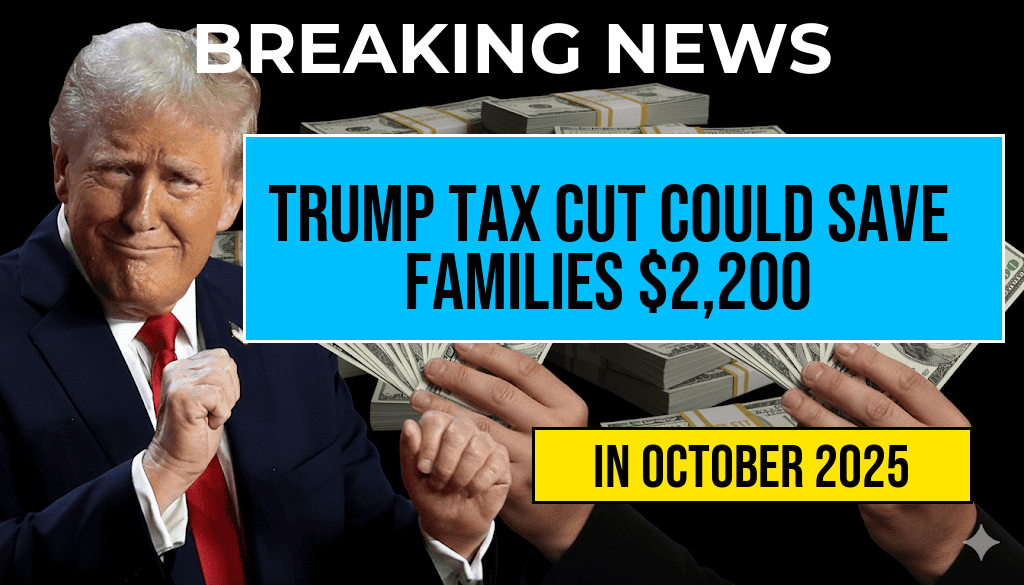New Washington Post Model Reveals Trump Tax Cuts Aren’t the Largest, but Families May Save Up to $2,200 Per Child
A recent analysis by The Washington Post’s modeling tool indicates that while the tax cuts implemented during the Trump administration did not constitute the largest in U.S. history, they still provided significant financial relief to many American families. The model estimates that families with children could see savings of up to $2,200 per child, depending on income level and filing status. This nuanced assessment offers a clearer picture of the tax policy’s impact, contrasting the broad claims of the cuts being the biggest ever with data showing targeted benefits primarily for middle- and upper-income households. As policymakers debate future tax reforms, understanding how current policies affect household finances remains central to shaping equitable economic strategies.
Understanding the Model’s Approach to Tax Impact Analysis
The Washington Post’s model employs detailed simulations based on IRS data, current tax laws, and demographic information to project how changes in tax policy influence household finances. Unlike simplified summaries, this approach considers variables such as income brackets, family size, and deductions to produce a granular view of potential savings. The analysis specifically looks at the *Tax Cuts and Jobs Act* (TCJA) enacted in 2017, which significantly overhauled the tax code, including lowering corporate rates and adjusting individual tax brackets.
According to the model, the *total* tax savings attributed to the TCJA for typical households varied substantially based on income and family composition. While some high-income households experienced notable reductions, middle-income families with children gained the most in absolute dollar terms per child, often reaching the $2,200 mark. This figure encompasses benefits from expanded child tax credits, increased standard deductions, and other provisions designed to support families.
How the Tax Cuts Affect Families with Children
The key driver behind the estimated savings is the enhancement of the *Child Tax Credit* (CTC). The TCJA doubled the credit from $1,000 to $2,000 per child and made it partially refundable, enabling lower-income families to receive money directly from the IRS. Additionally, the increased standard deduction reduced taxable income for many households, further lowering their effective tax rates. For example, a family of four earning around $75,000 annually could see combined benefits exceeding $2,000 per child through these provisions.
| Income Level | Estimated Savings Per Child | Total Savings for Two Children |
|---|---|---|
| $50,000 | $2,200 | $4,400 |
| $75,000 | $2,200 | $4,400 |
| $125,000 | $1,200 | $2,400 |
While the model confirms notable benefits for families with children, it also highlights disparities based on income. Higher earners tend to benefit less from child-related tax credits, as their tax liability is already low or eliminated by deductions. Conversely, families at the lower end of the income spectrum often see more substantial percentage reductions in their tax bills, though their overall savings may be smaller in dollar terms.
Comparing the Trump Tax Cuts to Historical Benchmarks
Critics have argued that the Trump-era tax cuts were not the largest in U.S. history, pointing to earlier reforms like the Kennedy tax cuts or the Reagan tax reforms. The Post’s analysis clarifies that while the magnitude of the cuts in dollar terms may not surpass past efforts, their structure prioritized benefits for specific demographic groups. For instance, the TCJA’s expansion of the child tax credit and its increased refundability resulted in direct financial gains for millions of families.
According to estimates from the Congressional Budget Office (CBO), the TCJA reduced federal revenues by approximately $1.9 trillion over a decade, with a significant share going to higher-income households. The Post’s model emphasizes that, in terms of *per-child savings*, the policy provided meaningful support, especially for middle-income families, though it did not broadly overhaul the tax burden for the highest earners.
Implications for Future Tax Policy
The findings underscore ongoing debates over the fairness and effectiveness of tax cuts. Advocates argue that targeted benefits, such as enhanced child credits, stimulate economic activity and reduce child poverty. Critics suggest that broader reforms are necessary to address income inequality and ensure that tax policies benefit a wider cross-section of society.
As policymakers consider avenues for reform, data-driven models like the one from The Washington Post serve as vital tools for assessing actual impacts. They allow for nuanced discussions that move beyond headline figures to understand real-world effects on families and the economy.
For more detailed insights on U.S. tax policies and their historical context, visit Wikipedia’s page on tax reform in the United States or consult analysis from Forbes.
Frequently Asked Questions
What does the WaPo Model indicate about Trump’s tax cut?
The WaPo Model suggests that Trump’s tax cut is not the largest in history, but it could still provide significant savings for families, with potential savings of up to $2,200 per child.
How much money can families save per child under the new tax model?
Families could save up to $2,200 per child according to the WaPo Model, depending on their income and tax situation.
Does the tax cut benefit all families equally?
No, the benefits vary based on income levels and family size. Some families may see more substantial savings, while others may experience less impact.
Why does the WaPo Model suggest the tax cut isn’t the largest?
The model compares current policies to previous tax cuts and finds that while this particular cut is significant, it doesn’t surpass the size of earlier major tax reforms.
How could this tax cut impact the economy and families?
The tax cut could provide immediate financial relief for families and potentially stimulate the economy by increasing household spending.










